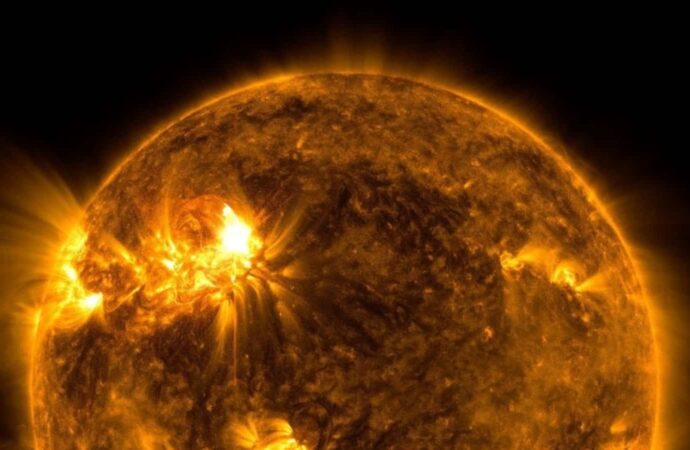The current solar cycle 25 has produced more sunspots than expected, leading to increased solar activity and potential damage to Earth.
H2 Sunspot AR3451 Explodes, Sending Strong M2.5 Solar Flares Towards Earth
Introduction:
In a surprising turn of events, solar cycle 25 has exceeded scientists’ predictions by producing more sunspots than expected. These sunspots are responsible for unleashing various solar activities, including coronal mass ejections (CMEs), solar flares, and solar storms, which have the potential to cause damage on Earth. Despite advancements in technology that allow scientists to predict most of these events, the current solar cycle has already surpassed the maximum threshold initially forecasted. NASA’s Solar Dynamics Observatory (SDO) is instrumental in monitoring the Sun’s volatile nature and has recently observed a dangerous sunspot, AR3451, that has exploded, sending strong M2.5 solar flares towards Earth.
The Explosive Sunspot:
During the late hours of October 1, NASA’s SDO captured a dramatic explosion of the Earth-facing sunspot AR3451. This sunspot possesses a “beta-delta” magnetic field, indicating the potential to produce strong M2.5-class solar flares. What is astonishing is that this sunspot didn’t even exist more than 24 hours prior to the explosion. It rapidly grew in size, boasting more than 12 dark cores, two of which are wider than Earth. While magnetic maps of the sunspot are not fully definitive due to its orientation away from Earth, it appears to have a mixed-polarity “delta-class” magnetic configuration that harbors energy for strong flares. Consequently, M2.5 solar flares have been detected being hurled out into space.
Understanding Solar Flares:
For those unfamiliar with solar flares, they are classified based on their strength using a logarithmic scale, similar to how earthquakes are measured. The smallest solar flares are classified as A-class and occur at near background levels. They are followed by B, C, M, and X-class flares, with X-class flares being the most powerful. The solar flare hurled towards Earth from sunspot AR3451 has an M2.5 intensity, meaning it is 2.5 times stronger than M1 solar flares.
The Role of NASA’s Solar Dynamics Observatory:
To monitor the Sun’s activity, NASA’s SDO utilizes three crucial instruments. The Helioseismic and Magnetic Imager (HMI) captures high-resolution measurements of the longitudinal and vector magnetic field over the entire visible solar disk. The Extreme Ultraviolet Variability Experiment (EVE) measures the Sun’s extreme ultraviolet irradiance, and the Atmospheric Imaging Assembly (AIA) provides continuous full-disk observations of the solar chromosphere and corona in seven extreme ultraviolet channels. These instruments allow scientists to gather data on various solar activities, including the recent explosion of sunspot AR3451.
Conclusion:
The unexpected increase in sunspots during solar cycle 25 has led to heightened solar activity and the potential for damage on Earth. NASA’s Solar Dynamics Observatory plays a crucial role in monitoring these events and has recently observed the explosion of sunspot AR3451, which has produced strong M2.5 solar flares. As scientists continue to study and predict solar activity, it is essential to stay informed about the potential impact on our planet.









